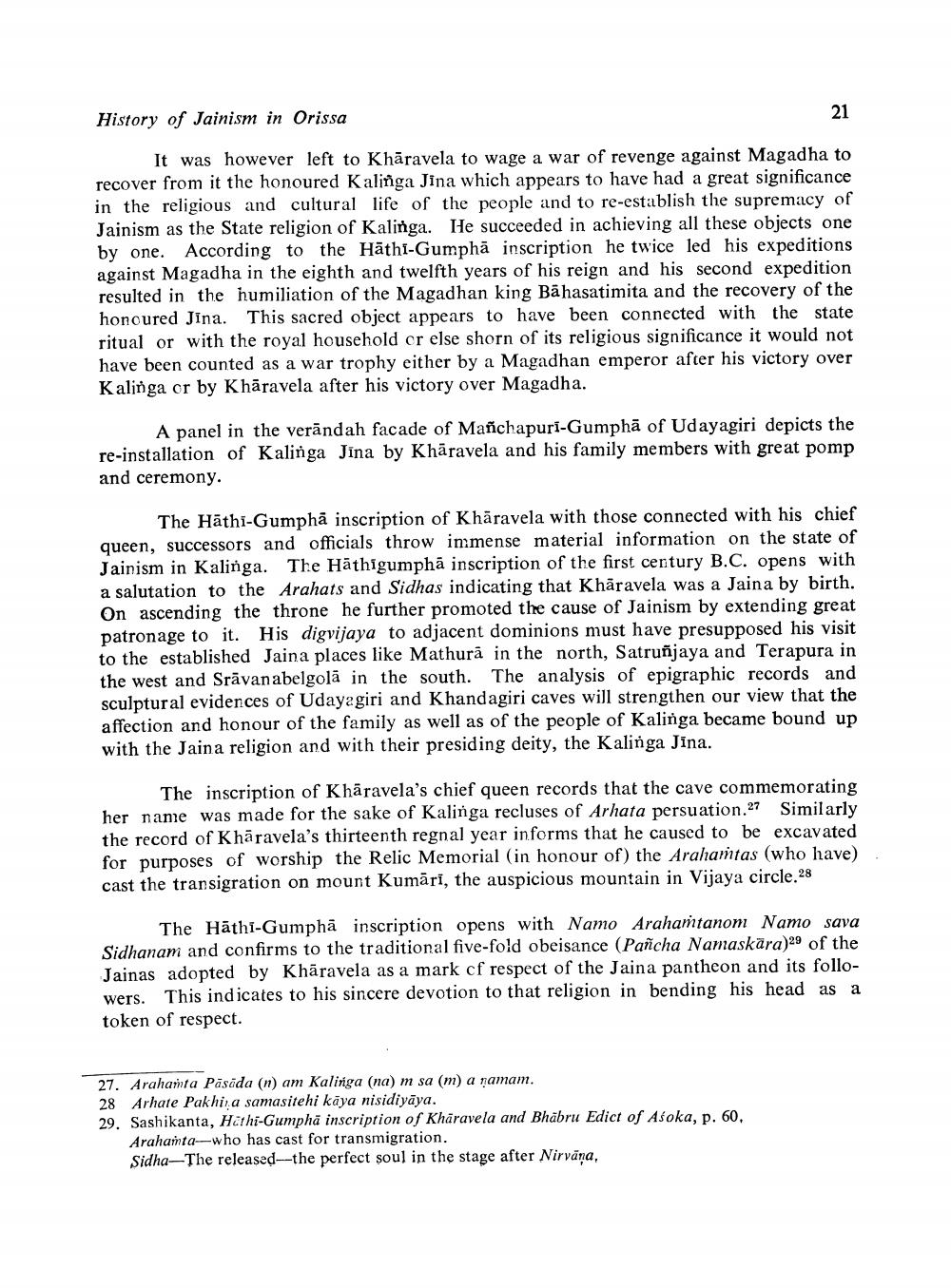________________
History of Jainism in Orissa
It was however left to Khāravela to wage a war of revenge against Magadha to recover from it the honoured Kalinga Jina which appears to have had a great significance in the religious and cultural life of the people and to re-establish the supremacy of Jainism as the State religion of Kalinga. He succeeded in achieving all these objects one by one. According to the Hāthi-Gumphā inscription he twice led his expeditions against Magadha in the eighth and twelfth years of his reign and his second expedition resulted in the humiliation of the Magadhan king Bahasatimita and the recovery of the honoured Jina. This sacred object appears to have been connected with the state ritual or with the royal household or else shorn of its religious significance it would not have been counted as a war trophy either by a Magadhan emperor after his victory over Kalinga or by Khāravela after his victory over Magadha.
A panel in the verāndah facade of Mañchapuri-Gumphā of Udayagiri depicts the re-installation of Kalinga Jina by Khāravela and his family members with great pomp and ceremony.
The Hāthi-Gumpha inscription of Khāravela with those connected with his chief queen, successors and officials throw in mense material information on the state of Jainism in Kalinga. The Hāthigumphā inscription of the first century B.C. opens with a salutation to the Arahats and Sidhas indicating that Khāravela was a Jaina by birth. On ascending the throne he further promoted the cause of Jainism by extending great patronage to it. His digvijaya to adjacent dominions must have presupposed his visit to the established Jaina places like Mathurā in the north, Satruñjaya and Terapura in the west and Srāvanabelgola in the south. The analysis of epigraphic records and sculptural evidences of Udayagiri and Khandagiri caves will strengthen our view that the affection and honour of the family as well as of the people of Kalinga became bound up with the Jaina religion and with their presiding deity, the Kalinga Jina.
The inscription of Khāravela's chief queen records that the cave commemorating her name was made for the sake of Kalinga recluses of Arhata persuation.27 Similarly the record of Khāravela's thirteenth regnal year informs that he caused to be excavated for purposes of worship the Relic Memorial (in honour of the Arahamtas (who have), cast the transigration on mount Kumāri, the auspicious mountain in Vijaya circle.28
The Hāthi-Gumphā inscription opens with Namo Arahaṁtanom Namo sava Sidhanam and confirms to the traditional five-fold obeisance (Pañcha Namaskāra)29 of the Jainas adopted by Khāravela as a mark cf respect of the Jaina pantheon and its followers. This indicates to his sincere devotion to that religion in bending his head as a token of respect.
27. Arahanta Pāsõda (n) am Kalinga (na) m sa (m) a namam. 28 Arhate Pakhina samasitehi kaya nisidiyāya. 29. Sashikanta, Hathi-Gumphā inscription of Khāravela and Bhābru Edict of Asoka, p. 60.
Arahaita-who has cast for transmigration. Sidha-The released--the perfect soul in the stage after Nirvana,




